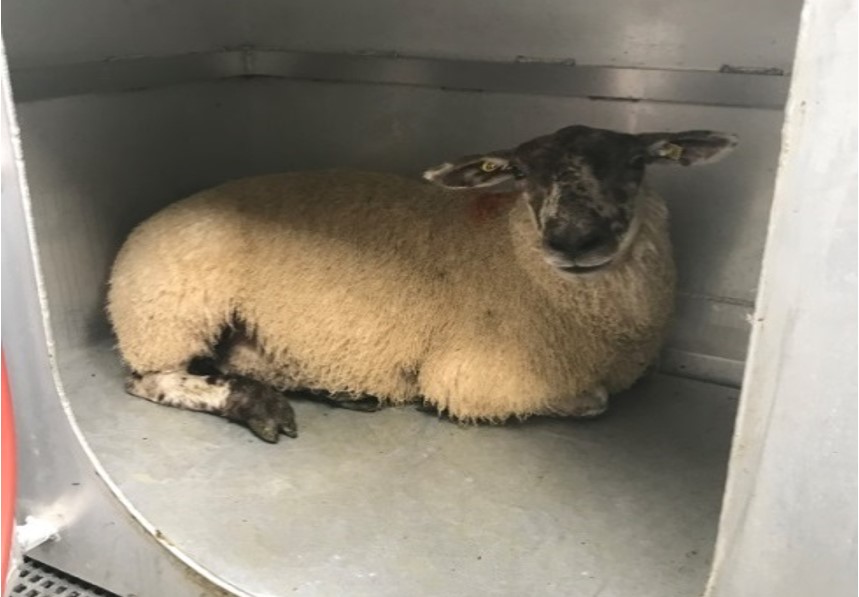Today (Tuesday, September 22) the Teagasc Virtual Sheep Week turns its attention to breeding and genetics on sheep farms.
Animal genetics studies the genes and genetic variation of animals, thus allowing farmers to identify superior (and inferior) animals to become the parents of the next generation in the flock.
While management or environmental factors can change throughout the lifetime of an animal, the genetics of the animal remains unchanged and is fundamental to the performance of the animal. The national genetic indexes are now a crucial tool to enable farmers to make more informed breeding and selection decisions for their flock.
Join Teagasc’s live interactive webinar this evening at 7:00pm with specialists, researchers and guest speakers on: www.teagasc.ie/virtualsheepweek; or Teagasc Facebook; or follow #VirtualSheepWeek on social media for information and advice on using genetics to increase productivity and efficiency on your sheep farm.
This evening’s panel discussion at 7:00pm will be led by Michael Gottstein, head of Sheep Knowledge Transfer in Teagasc, with panellists Fiona McGovern, Teagasc Athenry; Aine O’Brien, Teagasc Moorepark; and Eamonn Wall of Sheep Ireland.
Fiona will give an update on the results emanating from the INZAC flock which compares Irish sheep with New Zealand sheep; outline the impact of genetic selection on methane output; and investigate the possibility of breeding a more ‘climate efficient’ sheep.
Aine will discuss the possibilities of including traits such as lamb vigour and mothering ability into the genetic indexes. If this was possible, it would result in a significant reduction in labour on sheep farms.
Guest speaker, Eamonn Wall from Sheep Ireland, will discuss the recent developments to both the maternal and terminal €uro-star indexes and how to best use these indices when selecting sires for a sheep flock. He will also discuss the impact of genomic selection on the accuracy of the proofs.
Topics covered today include
The Sheep Ireland €uro-star indexes
Learn about the Sheep Ireland €uro-star indexes which aims to identify a low-cost, easy-care sheep with good maternal characteristics, that also produce a good quality lamb that reaches slaughter at an early age.
Find out how it has resulted in an increase in the accuracy of Replacement and Terminal indexes by 15% and 17% respectively, the equivalent of a ram having an additional 14 progeny records.
Lambing accounts for over 25% of the labour requirement across the sheep farming year; more than double the labour required at any other time of year.
Lamb vigour is a measure of how long it takes a lamb to stand after birth and ewe mothering ability is a subjective measure of the ewes’ behaviour towards her lamb(s).
Current research demonstrates that up to 6% and 41% of the differences in ewe mothering ability and lamb vigour, respectively, is due to genetic differences among sires. Hear about the work currently underway to include new labour-saving traits in the genetic indexes.
The INZAC flock – validating the replacement €uro-star index
A four-year study was carried out at Teagasc Athenry consisting of 60 New Zealand and 60 Irish ewes of high genetic merit and 60 Irish ewes of low genetic merit.
Results from this study will be presented this evening and show that ewes of high genetic merit, regardless of country of origin, gave birth to a higher total number of lambs, had higher weaning percentages and produced lambs that were heavier at 40 days and at weaning.
Work is on-going comparing the progeny performance of both New Zealand and the high genetic merit Irish rams in commercial flocks across the country.
Measuring greenhouse gases in sheep production systems
Current research at Teagasc is examining the methane output from sheep production systems with an overall aim being to determine the impact of genetic selection on methane output and investigate the possibility of breeding a more ‘climate efficient’ animal.
Portable accumulation chambers (PAC) are being used to measure methane output and are currently undergoing a validation experiment whereby the PAC are being compared to the gold standard method of measurement, the respiratory chamber.
Initial results are showing that the elite or five-star animals are producing less methane that their one-start counterparts. Tune in this evening to hear more.
For more information on Virtual Sheep Week, visit: www.teagasc.ie/virtualsheepweek.

